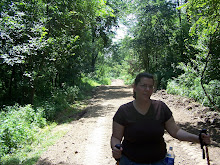
They say that those who fail to learn from history are doomed to repeat it. Isaac's Storm is a perfect example of this.
About two years ago I read Erik Larson's book The Devil in the White City at the insistence of my mother. Now that is noteworthy for the fact that my mother is not much of a book reader. It is rare that she makes recommendations so I tend to read them. The book told the juxtaposed stories of the construction of the World's Fair in Chicago, and the story of H.H. Holmes, a brilliant serial killer who supposedly killed more than 27 people. The stories may seem odd bedfellows but Larson intertwined them in ways that just make sense. And kept me fascinated. I devoured the book and started seeking out more of Larson's books. I bought Isaac's Storm but it ended up relegated to my shelves until this past trip. I figured with a hurricane just missing the Yucatan Peninsula where I was going, this would be perfect beach reading.
Isaac's Storm also tells multiple stories. The first is about the Galveston Hurricane of 1900. The storm has been considered one of the worst natural disasters to ever occur on U.S. soil. It killed over 6000 people and almost leveled the entire city of Galveston. The reason the hurricane was so devastating is mostly because the town never had any indication that it would be hit. The storm simply wasn't predicted. And that leads to the other stories in the book. Larson also tells the story of Isaac Cline, the chief weather observer for Galveston and provides a history of meteorology and hurricane prediction. In the early 1900s the Weather Bureau in the US was just starting out and so many of their predictions were based on the current knowledge. The "law of storms" as it were. And the "law" stated that no hurricanes ever went that far into the Gulf of Mexico. Because of that Galveston never built a seawall to protect itself from hurricanes. Because of the known "law of storms" the chief meteorologist never noticed the classic signs of a major storm. And because of this arrogant ignorance, a town nearly was destroyed.
 Galveston after the hurricane
Galveston after the hurricaneLarson weaves these stories together beautifully. This well researched book reads like a novel in parts, and a detailed history in others. I learned a ton about the early history of weather prediction, about the signs and warnings of a hurricane, and about the people and the city of Galveston. All personal accounts are based on letters and on Isaac's own accounts of living through the hurricane. The Weather Bureau at that time used telegrams to convey current conditions and predictions so Larson had a treasure trove of documents that allowed him to map the storm out. In many of the chapters we follow the path of the storm as it grows and moves east into the Gulf. We learn how the Cubans tracked the storm perfectly but because of an arrogant director at the Weather Bureau, those reports were not read. This was a book for me about devastation that possibly could have been avoided. It was about willful ignorance and arrogance and the feeling that humans could control nature. And it was particularly poignant after the devastation of Hurricane Katrina.
As I mentioned at the beginning, those who fail to learn from history are destined to repeat it. We see a city like New Orleans, very much like the city of Galveston. It was built below sea level. It was built without a high enough levee to fight off rising waters. It was a city built on arrogance that a storm could never be powerful enough to destroy it. And one did. And many people lost their lives and their property because of it. I know I'm up on my soapbox here but I see them rebuilding New Orleans and I hope that this time they get it right. Building in a flood plain is risky and arrogant. And for some reason we keep doing it. No matter what the consequences. I hope fervently that the government of New Orleans rebuilds with the worry of another storm. I hope they rebuild smart. Or if they won't, then they shouldn't rebuild.


No comments:
Post a Comment